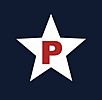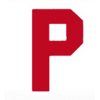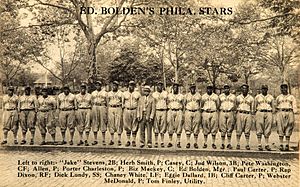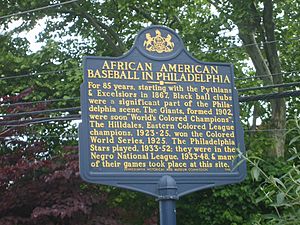Philadelphia Stars (baseball) facts for kids
Quick facts for kids Philadelphia Stars |
|||||
|---|---|---|---|---|---|
|
|||||
| Information | |||||
| League |
|
||||
| Location | Philadelphia, Pennsylvania | ||||
| Ballpark |
|
||||
| Year established | 1933 | ||||
| Year disbanded | 1952 | ||||
| League titles | 1934 | ||||
The Philadelphia Stars were a famous Negro league baseball team from Philadelphia. They played from 1933 to 1952. The Stars were part of the Negro National League for many years. Later, they joined the Negro American League.
In 1934, the Stars won their league championship. They beat the Chicago American Giants in a close playoff series. Star players like Slim Jones, Biz Mackey, and Jud Wilson helped the team succeed. Even the legendary pitcher Satchel Paige played for the Stars in 1950. The team stopped playing after the 1952 season.
Contents
The Philadelphia Stars: A Baseball Story
The Philadelphia Stars baseball team was started by Ed Bolden in 1933. Bolden was a very important person in Black baseball. He had owned another successful team called the Hilldale Club. That team won championships in the 1920s. Bolden also helped create the Eastern Colored League. He was key to building the Stars' championship team in 1934. He managed the team until he passed away in 1950.
After Bolden's death, his daughter, Hilda Bolden Shorter, took over. She ran the team until 1952. The team also had financial help from sports promoter Eddie Gottlieb. He owned other sports teams, including basketball teams. Gottlieb helped the Stars by leasing a field for them to play on. He also helped book games for other Negro league teams.
Starting Out: The Independent Season (1933)
When the Philadelphia Stars first started in 1933, they were an "independent" team. This meant they didn't belong to a specific league yet. The main Negro National League at that time mostly had teams from the Midwest. So, many East Coast teams, like the Stars, played games on their own. The Stars often played against local semi-professional teams. They also played against other Black teams, like the Pittsburgh Crawfords.
Joining the League: The Negro National League Years (1934–1948)
In 1934, the Stars joined the Negro National League. The league had a special system that year. The team that won the first half of the season played the team that won the second half. The Chicago American Giants won the first half. The Stars won the second half with a strong record.
The Stars then played the Chicago American Giants for the 1934 Negro National League Championship. The Stars won the series four games to three. However, this championship series had some problems.
The first four games were played in Chicago. Chicago won three of these games. But then, game 5 was delayed for ten days. When the series continued in Philadelphia, the Stars won game 6. This tied the series. However, there was a lot of disagreement during this game.
Before game 7, the Chicago manager complained about some calls. The league commissioner met with the team owners and umpires. The Stars' owner, Ed Bolden, said his team wouldn't play if one of his players was suspended. In the end, the game went on.
Game 7 was played on October 1. It ended in a 4-4 tie because it got too dark to play. Game 8 was played the next day. Slim Jones pitched a great game, and the Stars won 2-0. This victory gave them the championship.
Even with the disagreements, the Stars' championship was confirmed by the league. The Stars continued to play in the Negro National League. They finished in fourth place in 1945, 1946, and 1948.
The Final Years: Negro American League (1949–1952)
After 1947, major league baseball started to allow Black players. This was called "integration." Because of this, the Negro National League eventually closed down. The Philadelphia Stars then joined the Negro American League in 1949.
However, as more Black players joined major league teams, the popularity of the Negro Leagues declined. The Stars continued to play until the end of the 1952 season. After that, the club stopped playing.
Home Ballparks: Where the Stars Played
The Philadelphia Stars played their home games at different ballparks. From 1934 to 1935, they played at Passon Field. This field is now where West Philadelphia High School's athletic field is.
In 1936, the Stars moved to 44th and Parkside Ballpark. This was their main home field until 1947. The Stars also often played on Monday nights at Shibe Park. This park was much bigger and could hold more fans. On June 21, 1943, over 24,000 fans watched the Stars beat Satchel Paige and the Kansas City Monarchs at Shibe Park.
After 1947, the Stars played games at other ballparks in the area. This included Wilmington Park in Delaware.
Team Look: Logos and Uniforms
The Philadelphia Stars didn't have a single "official" team logo like sports teams do today. In the 1930s and 1940s, it wasn't common for teams to have standard symbols. The Stars wore uniforms with red and navy blue colors.
One cap often linked to the Stars is from 1938. It was navy blue with a red brim. It had a white star with a red "P" on it. For most of their history, they wore a white cap with a red brim and a red "P." Another cap style was all navy blue with a red "P."
The Negro Leagues Baseball Museum (NLBM) later created logos for famous Negro League teams. They did this in the 1990s to help raise money for the museum. So, the logo you might see on Stars merchandise today is not the original historical logo. It helps support the museum's educational work.
Great Players: Stars on the Field
Many talented players played for the Philadelphia Stars. Some were chosen for the All-Star Game. Others are now in the Baseball Hall of Fame.
All-Star Team Selections
The Negro League Baseball All-Star Game was called the East-West Game. Players were chosen by fans. These Philadelphia Stars players were selected for the East team:
- 1933 – Rap Dixon (RF), Dick Lundy (SS), Biz Mackey (C), Jud Wilson (3B)
- 1934 – Slim Jones (P), Jud Wilson (3B)
- 1935 – Slim Jones (P), Biz Mackey (C), Webster McDonald (MGR), Dick Seay (2B), Jake Stephens (SS), Jud Wilson (3B)
- 1936 – no Stars on team
- 1937 – Jake Dunn (2B)
- 1938 – Jake Dunn (PH)
- 1939 – Red Parnell (LF), Andy Patterson (3B)
- 1940 – Gene Benson (CF), Henry McHenry (P)
- 1941 – Henry McHenry (P)
- 1942 – Barney Brown (P), Andy Patterson (3B), Jim West (1B)
- 1943 – no Stars on team
- 1944 – Barney Brown (did not appear in game), Marvin Williams (P)
- 1945 – Frank Austin (SS), Gene Benson (LF), Bill Ricks (P)
- 1946 – Frank Austin (PH), Gene Benson (RF), Barney Brown (P), Murray Watkins (PH)
- 1947 – Frank Austin (SS), Henry Miller (P)
- 1948 – Frank Austin (SS), Bill Cash (C)
- 1949 – Bill Cash (C), Oscar Charleston (MGR), Buster Clarkson (RF), Bob Griffith (P)
- 1950 – Jonas Gaines (P), Ben Littles (RF), Charles White (3B)
- 1951 – Wilmer Harris (P), Ben Littles (PH), Milt Smith (3B)
- 1952 – Wilmer Harris (P), Jimmy Jones (RF), Ted Washington (SS), Don Whittingdon (3B)
Negro National League Rookie of the Year
- 1940 Mahlon Duckett
Hall of Famers
Several players who were part of the Philadelphia Stars later became famous enough to be inducted into the Baseball Hall of Fame.
| Philadelphia Stars Hall of Famers | |||
|---|---|---|---|
| Inductee | Position | Tenure | Inducted |
| Oscar Charleston | CF Manager |
1941 1942–1944 1946–1950 |
1976 |
| Biz Mackey | C | 1933–1935 | 2006 |
| Satchel Paige | P | 1946, 1950 | 1971 |
| Turkey Stearnes | OF | 1936 | 2000 |
| Jud Wilson | 3B Manager |
1933–1939 1937 |
2006 |
The Stars' co-owner, Eddie Gottlieb, was also honored. He was inducted into the Basketball Hall of Fame in 1972. This was for his important work as a team owner and promoter.
Remembering the Stars: Their Legacy Today
The Philadelphia Stars team is still remembered today in many ways:
- Special Uniforms: The Philadelphia Phillies baseball team has worn special Stars road uniforms in games. They did this in 1997 and 2011 to honor the history of Negro League baseball.
- Historical Marker: In 1998, a special historical marker was placed in Philadelphia. It's at the site of the former 44th and Parkside Ballpark. This marker remembers the history of African-American baseball in Philadelphia.
- MLB Draft Honor: In 2008, Major League Baseball held a special draft. They honored surviving players from the Negro Leagues. Each MLB team chose a player. Former Stars players Walter Lee Gibbons, Harold Gould, and Mahlon Duckett were chosen.
- Museum Collection: The African American Museum in Philadelphia has a special collection. It includes scorebooks, photos, and letters from the Stars and the Hilldale Club.





